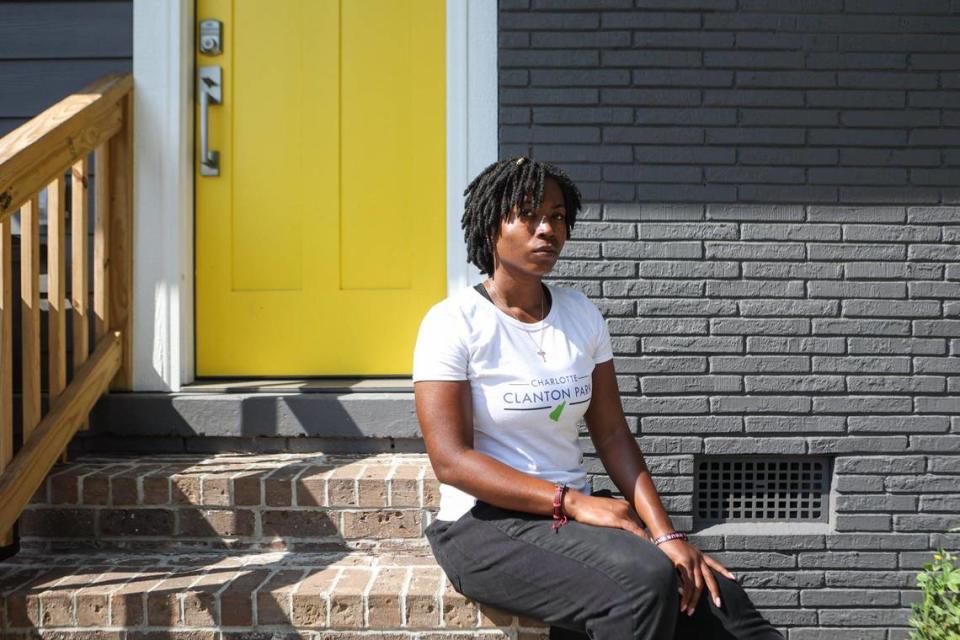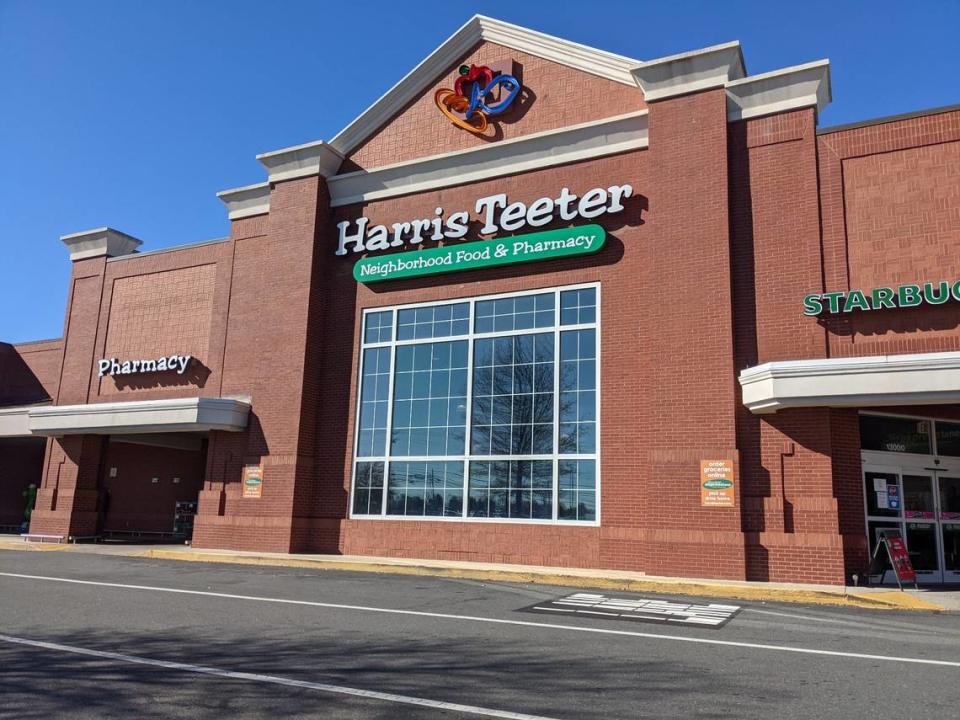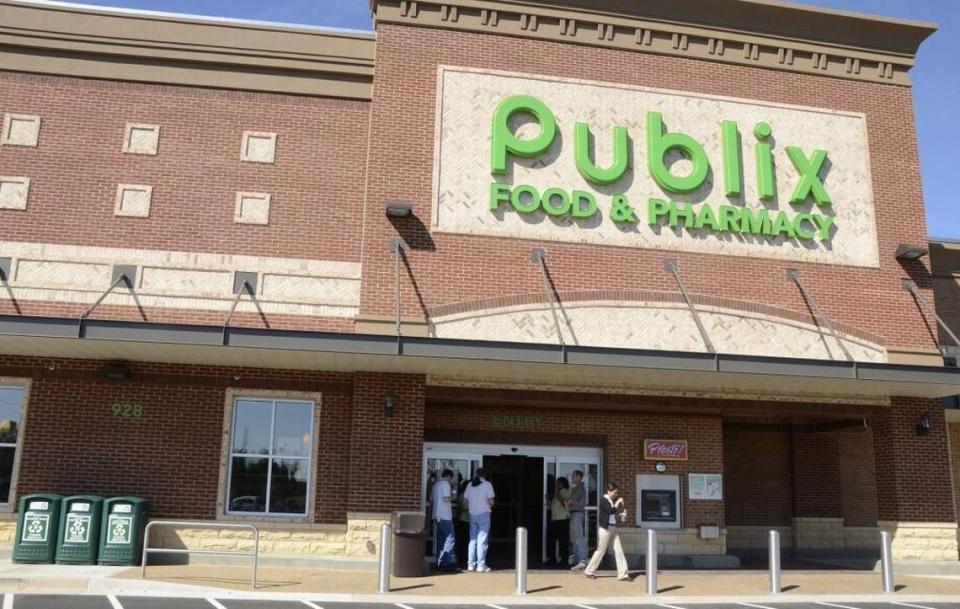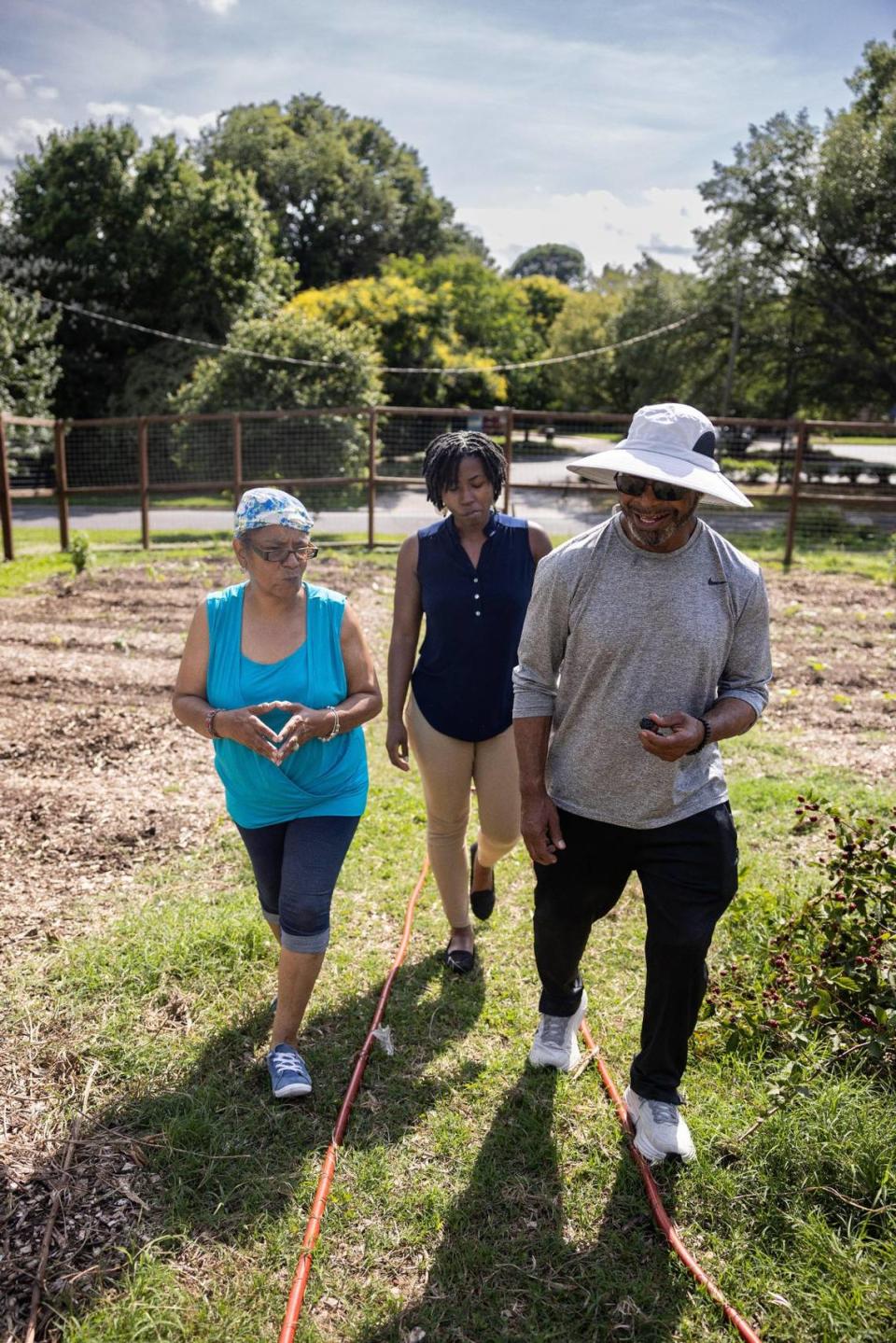‘They’re not coming’: Grocery stores abound, but Charlotte food deserts still prevalent
D’Asia Feaster has lived most of her life in Charlotte’s West Boulevard corridor, where there hasn’t been a grocery store in over 20 years.
Until Feaster was about 6, her family didn’t own a car. She remembers sitting in her stroller stuffed with groceries for the walk home from the only grocer in the predominantly Black community, Wayne’s Super Market. It closed in the late ’90s.
“When you don’t have a car, using a stroller or a bike is challenging to get a significant amount of groceries,” said Feaster, 26. The same goes for public transportation, especially having to catch more than one bus. You have to leave our community to travel to a store in another area.”
Yet just across the train tracks from West Boulevard into South End sits a bountiful choice of grocers and healthy food options. Feaster now shops at Walmart on Wilkinson Boulevard for groceries, or heads to Harris Teeter on East Boulevard, Publix on South Boulevard or Food Lion on Park Road.
“It’s two completely different worlds,” Feaster said. “It’s frustrating to see all the growth and development and access within reach, but not. It’s almost like it’s creating the separation intentionally.”
She’s not alone in her frustration.
The lack of traditional grocery stores is an ongoing problem on the west side of Charlotte, and some parts in the east, an analysis of demographic and grocery store location data by The Charlotte Observer found. What’s more, the disparities disproportionately affect people of color.
About 38% of Charlotte’s Black residents — compared with 25% of its white residents — live more than 1 mile from a grocery store, the Observer found. The U.S. Department of Agriculture defines food deserts in urban areas as low-income census tracts — or neighborhoods — where at least 500 people, or 33% of the population, live more than a mile from a grocery store.
It’s been so challenging to entice a supermarket chain to open in west Charlotte that Mecklenburg County gave up on that goal. Instead, it’s throwing support behind alternative plans to provide healthy food options, such as a food co-op in the community.
And it’s not just a problem in Charlotte. A recent Brookings Institution report found that in 10 major cities, premium grocery stores were less likely to be located in majority Black neighborhoods, regardless of income levels.

Left out of Charlotte’s hot grocery market
The Charlotte region has over 720 grocery stores, from re-emerging brands like Earth Fare and Lowes Foods to expansions by Publix, Sprouts Farmers Market and Food Lion. Matthews-based Harris Teeter calls the area home.
That stiff supermarket competition generated nearly $9.5 billion last year, even as food deserts stubbornly persist.
Roughly 31% of Charlotte’s residents live more than a mile from a grocery store, which includes 115,000 Black residents, 94,000 white residents and 50,000 Hispanic residents, Observer data show. Here’s what else the Observer analysis found:
▪ Communities farthest from a grocery store are in predominantly Black neighborhoods in north or west Charlotte.
▪ Some areas just east of Charlotte Douglas International Airport also sit 2 miles from the nearest store.
▪ Areas north of uptown, running along Beatties Ford Road and just east of Statesville Avenue, sit more than 1 1/2 miles away from a grocery store.
Big metro areas see ‘stark disparity’ in grocery stores
While Charlotte was not part of the Brookings Institution research, the study found similar concerns about food deserts and the lack of investment in predominantly Black communities in 10 other large metro areas.
Brookings experts looked at premium grocery stores, like Whole Foods and Trader Joe’s, in majority-Black and non-majority Black communities. They found that majority-Black neighborhoods were less likely to be within 1 mile of a premium grocery store.
“I think the overall results of the study and the trends were not surprising. What surprised me was the extent you could see this disparity,” Brookings Institution senior research associate Manann Donoghoe said. “It’s just really stark.”
Seven of the metros had no premium grocery stores within a mile of majority-Black, high-income neighborhoods. That included Prince George’s County in Maryland, which is the highest-income county in the U.S. for Black residents.
“It just seems like madness when you’ve got an investment opportunity like that to not take it,” Donoghoe said.
Brookings also found that dollar stores are more common in majority-Black communities regardless of income levels, signaling the area is not worth their investment. In Charlotte, the Observer’s analysis didn’t find that dollar stores were more concentrated in food desert areas than other places.
In west Charlotte, convenience and dollar stores dot the landscape, helping fill the grocery void.
Typically such retailers lack fresh options or products that meet dietary needs, compared to supermarkets, multiple studies show, and city officials and residents told the Observer. And, the prices are often higher than traditional grocers, which stock a variety of sizes.
“They can crowd out the value of those neighborhoods,” Donoghoe said. “These kinds of stores become a signifier to others whether communities are worth investing in.”
UNC Charlotte food desert study
Closer to home, UNC Charlotte’s Office of Urban Research and Community Engagement led a study in 2021 about food deserts in west Charlotte.
Neighborhoods that were redlined in the 1960s for exclusionary, race-based reasons are the same areas where grocery stores remain missing today, said Colleen Hammelman, director of the Charlotte Action Research Project at the college.
“These are not naturally occurring phenomena,” she said. “We can see very clearly the decades of disinvestment on the part of businesses and government in these neighborhoods has created an environment in which it’s easier for grocery stores to say it just doesn’t fit our calculations to go in there.”
No profit in ‘low-income neighborhoods’
During the pandemic, when grocery stores were practically the only businesses open, local government officials resolved to improve healthy food access.
Three years ago, Mecklenburg County commissioners called food deserts unacceptable. They vowed to collaborate with supermarket chains to come to low-income neighborhoods.
The idea was straightforward: offer grocery stores financial incentives to open in food deserts.
Access to healthy foods is crucial for a person’s overall well-being, county manager Dena Diorio told The Charlotte Observer in a recent interview. “It became increasingly clear during COVID when certain populations were disproportionately impacted,” she said.
Diorio said meetings between the county and supermarket executives about incentives to open in food deserts would be a first of its kind for Mecklenburg.
But after talking with Harris Teeter and Publix, “we really couldn’t figure out any way to incentivize big grocers to open grocery stores,” Diorio said. “The margins are so slim that (they) don’t believe they can make a profit in a low-income neighborhood.”

When asked to respond to Diorio’s comments about investing in Charlotte’s food deserts, Harris Teeter said in a statement that a number of factors determine where a new store goes, “including size of parcel available, layout of location, zoning permissions, future and existing traffic patterns, transportation opportunities and proximity to housing.”
Florida-based Publix said without more context about the meetings, it could not comment. Publix also said it does not discuss its business strategies.
Food Lion, which has approximately five stores in west Charlotte that help keep some areas from being food deserts, said it continues to expand to reach more communities. “Our goal is to provide convenient locations that offer a wide variety of fresh and affordable products,” the Salisbury-based grocer said in a statement.
None of the three grocery store chains made anyone available for an interview about their decision-making process for stores in Charlotte.
Grocers look at many factors when deciding where to locate, such as population, neighborhood demographics, visibility, traffic and local competition, according to industry publication Grocery Dive. And, grocery chains aren’t afraid to open near other supermarkets that don’t offer the same value or have older stores.
Stores also use software to analyze locations and may rely on data from store loyalty cards for insight into who their customers are, where they live, what they buy and when, The Guardian reported.
Initiatives by local and federal governments to provide grocery stores financial incentives for opening in food deserts have not worked, UNC Charlotte’s Hammelman said.
“A whole lot of academic research has shown that those investments just have not made the dent into food insecurity and nutrition outcomes,” Hammelman said.
The county, Diorio said, needed to rethink how it helped provide grocery access to residents in communities lacking supermarkets.

‘They’re not coming’
Some residents are no longer waiting for grocery stores in their neighborhoods. They’re trying to take matters into their own hands.
“We’re not going the way of a traditional grocery store,” said Rickey Hall, board chair of the West Boulevard Neighborhood Coalition. “They’re not coming.”
The coalition represents 19 communities, about 19,000 residents in 7,000 homes, according to the nonprofit’s website.
Residents have contacted major grocers with plans to attract markets for decades, Hall said. Nothing worked. “None of them saw the value of investing in the corridor,” he said. “We were tired of this and we are going to pursue a co-op grocery store.”
They’re calling it Three Sisters Market, an homage to three women who were early leaders in the local Black community. Eight years in the making, the goal is for it to be a full-service grocery store and open in 2025.
The co-op will be on the same site as the coalition’s Seeds for Change garden off Romare Bearden Drive at West Boulevard. The Urban Market sells seasonal fresh produce while helping youths who tend the garden.
“The community-owned and driven full-service grocery store will be professionally managed and address historic inequities,” Hall said.
But it would come with a hefty price tag that the group is still far from reaching. The market is expected to cost about $10 million.

In June, Mecklenburg County approved $3 million for the project. The co-op has received other financial commitments including $1.5 million from the city and $750,000 in congressional funds spearheaded by U.S. Rep. Alma Adams, a Charlotte Democrat.
Although the area is near commercial and residential development, “the options for corridor residents to acquire food come only in the form of convenience and Family Dollar stores that saturate the area,” Adams said in a letter to the House Appropriations Committee in April 2021.
Charlotte City Councilwoman Victoria Watlington is disappointed that people have had to fight for so long to get basic needs met. Three Sisters Market can provide more than healthy, affordable food, she said. It also could ignite future investment.
“It is absolutely a way to fill the desert with ownership and accountability,” said Watlington, who represents District 2, which includes the West Boulevard area. “This will be a great example in the city showing what can happen when we let the people involved lead the solution.”
The Urban Institute’s research highlights how the co-op could succeed.
“Wealth that’s generated from that store remains in that community,” Hammelman said. “The food can be more culturally appropriate and residents can have a say in what’s on the shelves.” Plus, other services such as cultural and nutritional programs can meet people’s needs beyond just purchasing food.
Other ideas for food desert fixes
The city and county also support other strategies for bringing healthy food access to food deserts in Charlotte.
“We have to start thinking differently about how we get food to people,” Diorio said. “Sometimes it’s easier to bring the food to the people than trying to figure out how to get a brick-and-mortar grocery store in a neighborhood.”
The county is expanding its Food Policy Council, which advocates for healthy, equitable food access. A refrigeration program is at corner stores that stock produce and support community gardens.
Other initiatives include:
▪ The county and city approved $3 million and $1.5 million, respectively, for construction for Carolina Farm Trust to open a distribution center in the Thomasboro-Hoskins neighborhood working with local farmers. It’s expected to break ground in July and take up to 24 months to open, Diorio said.
That’s two years later than previously projected, however. Early last year, after the county voted on the funding, the trust expected that the distribution center would be open by this spring or summer, the Observer reported at the time.
▪ County commissioners approved $370,000 for two mobile food markets, in addition to the one already running, via the Mobile Market Program.
▪ An Eat Well program offers $40 per month for fruits and vegetables at Food Lion stores in Mecklenburg County to eligible residents.
▪ SNAP Double Bucks at Farmers Markets, lets customers of SNAP, formerly the food stamps program, double the amount spent at accepting farmers’ markets up to a $50. Approximately 80% of Mecklenburg farmer’s markets participate.
Transportation worries too
For areas that see few to no supermarkets, getting to where they do exist is made more challenging if they lack a car. That’s why public transportation also is a piece of the food desert puzzle.
“As Charlotte’s population grows, we want to make sure that people in neighborhoods throughout the city have access to essential amenities. That includes food,” said Meg Fencil, engagement and impact director for Sustain Charlotte. The nonprofit mostly focuses on transportation and land use issues.
“A person could spend hours doing a simple grocery run,” Fencil said. “It’s hard to buy ice cream when you’re waiting on a bus that may or may not show up.”
Missing out on ‘untapped potential’
Developers, too, have been trying to attract grocers to the northwest side of town, said Rodney Faulkner with Boundary Street Advisors of Charlotte.
Faulkner and business partner William Haygood III are behind a mixed-use development on Statesville Avenue in the Druid Hills and Camp North End area that will include apartments, townhomes and an 8,000-square-foot grocery store. They are working to sign a grocer, and hope to have an announcement within a year.
“This area is anemic with food offerings,” Faulkner said. “They (supermarket chains) are missing out on untapped potential.”
Haygood, who has family ties to the area, said the neighborhood needs a grocery store. The residents of The Gables senior apartments have “quite a trek for them to go get fresh food.
“The neighborhood has been trying to get a grocery store for a long time,” Haygood said, “and we’re trying to meet that need.”

Seven years ago, Faulkner began reaching out to grocery store officials. He’s talked with Harris Teeter and Lidl, and even called Trader Joe’s CEO Dan Bane. Lidl was interested but wanted more space than was available in the development, Faulkner said.
“Right now, it’s very difficult to find enough land in some of these urban corridors at a price that a grocer may want to pay,” Haygood added. “It doesn’t seem like the model fits well. They need smaller (store) formats for the neighborhoods.”
Quenching Charlotte’s food deserts
Over in Enderly Park, Shamaiye Haynes’ home on Tuckaseegee Road has a large red food box in the front yard. The “Free-for-All Pantry” lets passersby take what they need or make a donation.
On a recent June day, free food included bananas, cereal boxes and blueberries.
Haynes often sees a neighbor pushing his wife in a wheelchair to the Aldi on Freedom Drive, over half a mile away, with stacks of groceries on her lap on the return trip.
While parts of Enderly Park aren’t technically in a food desert, it sure doesn’t feel that way. Haynes said people there “definitely know they’re in a food desert.”
Haynes is co-director of QC Family Tree, a faith-based neighborhood nonprofit promoting social change. She delivers boxes filled with seasonal items like romaine lettuce, strawberries and cucumbers to residents.
Karen Myer greeted Haynes in her front yard on a recent hot, sunny afternoon, and was delighted looking inside the box: “Yummy, a lot of yummies.”
“Sometimes food is the last thing on my list because I have bills to pay,” said Myer, who is retired. Fruits and vegetables are expensive for people on fixed incomes, she said.
“Some people think we need a Harris Teeter or Publix like everybody else has,” Haynes said. “But is that going to sustain the needs we have?”
Feaster, the woman whose family didn’t own a car when she was young, is now a neighborhood ambassador for the West Boulevard Neighborhood Coalition.
Handing out a few boxes of fresh foods to residents just isn’t cutting it, Feaster said. The co-op, she believes, will significantly improve people’s lives.
“It’s more than just the food,” Feaster said. “There’s an empowerment aspect to it that makes a significant difference to having a retail grocery store in the community.”
How we mapped Charlotte’s grocery deserts
To see how many Charlotte residents might live in a food desert, the Observer mapped 180 grocery and superstores — such as Walmart — in Mecklenburg County and just across its border. The Observer drew a mile-long buffer around each store and added demographic information by block group, a census term for a cluster of neighborhood blocks.
If the center point of a block group fell within a mile buffer, the Observer considered residents there close to a grocery store. If the center point was outside of that buffer, the Observer considered residents of that block group part of a food desert.

